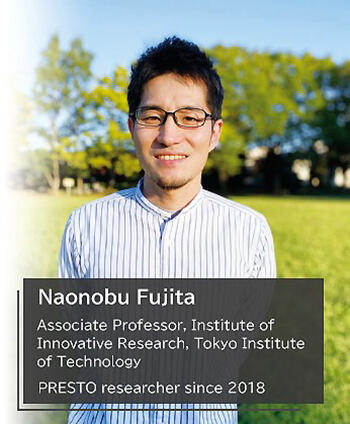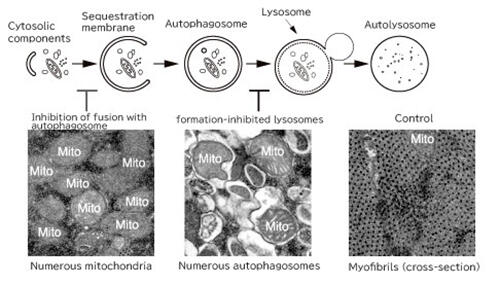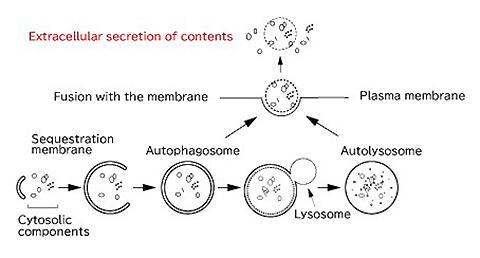

Associate Professor Naonobu Fujita of the Tokyo Institute of Technology Institute of Science and Technology is working on autophagy research based on a unique method using Drosophila. His current focus is in the research field of "function and control of fine particles in living organisms" where he is trying to clarify the complete mechanism underlying autophagy-dependent secretion.
Prof. Fujita studied glycoprotein degradation at the undergraduate level and autophagy throughout graduate school under the supervision of Professor Tamotsu Yoshimori of Osaka University Graduate School of Medicine/Graduate School of Frontier Biosciences. The motivation for arriving at his current research theme was the words of Professor Yoshinori Ohsumi of the Tokyo Institute of Technology, who was advising him alongside Mr. Yoshimori at that time. "When I was wondering what to focus on as a researcher, Professor Ohsumi advised me, 'Because you are young, do something new," he recalls.
Therefore, Prof. Fujita decided to take a step back from autophagy, and the research theme he chose at the University of California, San Diego, where he studied abroad, was muscle cells. Muscle cells are injured and damaged each time exercise is performed, but they reassemble their cell structure to preserve muscle function. However, since it is difficult to culture differentiated muscle cells and the related mechanism was unclear, he set out to clarify the mechanism underlying muscle cell remodeling.
A return to autophagy from results in a new theme
Prof. Fujita has been working with the model organism Drosophila since he moved to the University of California. Not only are their muscle cells are similar to humans; they are located just below the body surface and can also be observed while the organism is still alive (Fig. 1). Since insects remodel muscle cells during the pupal period when they develop from larvae to adults, Prof. Fujita analyzed the genes that act on muscle reconstruction during this metamorphosis period.
Surprisingly, it became clear that a series of genes related to autophagy are involved (Fig. 2). "I had intended to move away from autophagy in my research, but because of this, I was reminded of its importance," says Prof. Fujita with a smile.
Furthermore, when autophagy-related genes were expressed in muscle cells, it was discovered that these proteins were released extracellularly via autophagy and accumulated in the kidney through the circulation system in the body. "We found that a significant amount of protein is secreted via autophagy, which suggests a novel secretory pathway, and we are now trying to elucidate this mechanism," he said (Fig. 3).
Specifically, his next goal is to identify the proteins secreted during autophagy and to analyze their functions. It is a difficult task to find the muscle cell-derived proteins from among the various secretions contained in the body fluids of Drosophila. "Though it is a difficult task, if an exhaustive analysis can be performed, it may reveal a new significance of autophagy that has not been anticipated before," Prof. Fujita said about the future prospects of his research.






